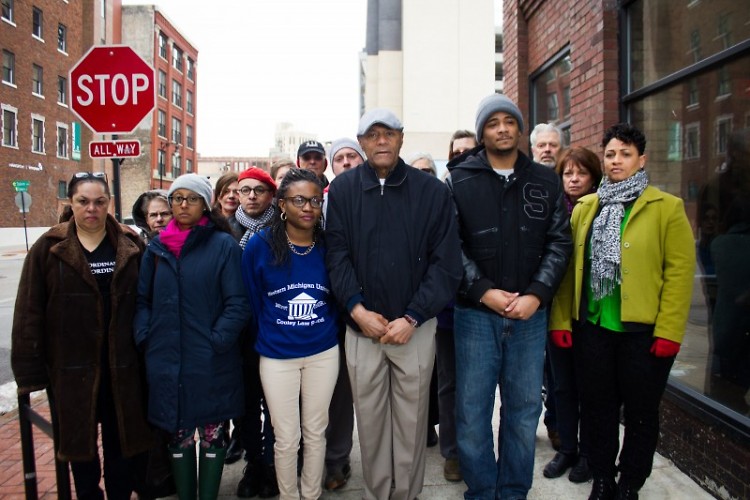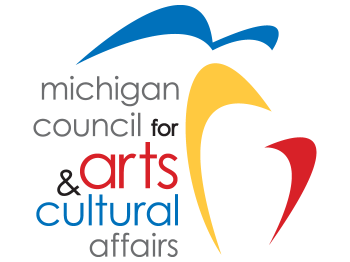Growing up, I was never allowed to play with toy guns; this restriction came without explanation or justification. That was the way it was. I was once gifted this really cool wooden rubber band gun – it was placed in the trash. Anything closely resembling a gun was forbidden (thank god Super Soakers and Nerf guns are too ridiculous looking to ever be confused for a real gun). But that was my life growing up; restrictions that never quite made sense but were never questioned because questioning the decision of a parent just wasn’t culturally acceptable. It also wasn’t necessary, because nothing seemed abnormal about those restrictions. Let me rephrase: the restrictions placed on us by our parents were simply things “good parents” did. Age has taught me that those restrictions were things “black parents who don’t want to bury their kids” did.
That was my reality and that is the reality of many Grand Rapids Public Schools students and some Forest Hills students.
Last week I wrote an article about four Forest Hills Central students who made the decision to participate in an act of racial intimidation. The feedback was what one expects when writing about the actions of another. One mother asked me to come into their schools, meet their kids, and “get to know their character.” What’s interesting however is I do know your students. I’m friends with folks who are the product of Forest Hills Schools. I’ve seen the incredible arguments your students have made on the House and Senate floors during a Michigan Youth in Government conference. I know good kids come out of those schools and I also know young people who do not participate in acts of racial intimidation do as well.
However, in the comments I received, I didn’t hear consideration of the effects the actions of those four I was referring to had on the young people who were in attendance. Nor did I hear consideration of the emotions behind the objections of the offended. This could’ve been an opportunity for you to listen and teach your young people why people were offended and how to better consider the realities of others before one acts.
I received a few emails from parents who chose to project remarks made about the actions of four onto their own children, but most importantly I saw some problematic commentary that showed that parents missed the entire point because they jumped into a defensive mode rather than taking in the commentary and thinking about the individuals they are raising. I would like to note, I am not writing this because I feel the need to step back from the words previously printed; I whole-heartedly stand by every assessment made about the actions of those young people while at the Ottawa Hills football game. I am, however, a race educator and so it would be out of my character to not take this opportunity to educate a removed populous on the impact of this occurrence.
It’s hard for people to truly wrap their heads around racism when they are not directly affected by it. I read some comments from folks who used their racially diverse family as justification around why they cannot possibly be racist. I read someone say how I “was the new face of racism.” But I missed the empathy for the students who saw that display and thought about their complicated relationship with this country as they watch news cycles that show 13 year olds with toy guns being murdered by police while they play. I missed the reflection on why the descendants of slaves might react negatively to imagery that reminds them of a time when their lives were categorized as property. I missed the recognition of the natives who see 13 stars that represent 13 ways they were stripped of their homes, massacred and never repaid…or healed. I miss all of the indicators that highlight this country has done some terrible things and that every flag represents a different period in time. Every flag means something different to everyone. And that flag paired with a Trump sign is a reminder of the kind of hate that burned crosses in lawns, deployed dogs onto peaceful protestors raising awareness around systemic injustice and continues to fuel environmental disasters centered in communities of color.
Racism is both continuous and episodic.
Racism is not about good and bad people; good people can be racist. Racism doesn’t mean an absence of other human factors; you can love someone passionately and be racist towards them. Racism is not always intentional. Racism is first and foremost a learned behavior taught by communities and reinforced by institutions. Racism is prejudice supported by power – the kind of power that creates redlining that results in variant housing outcomes for those whose color is not desired by those with the power to house. Racism is the kind of prejudice that results in education policies like No Child Left Behind, punishing the under resourced for not performing at expectations that were set without consideration of generational disparities impacting education outcomes.
The lesson coming out of Forest Hills should first and foremost be: conscious intent is not the sole characteristic of a racist act. We should take this opportunity to teach our young people to do better by teaching them better. Yes, there will be mistakes along the way but what matters is how they account for those mistakes.
Actions have consequences that hurt other people, that’s why bullying is so bad.
The Rapidian, a program of the 501(c)3 nonprofit Community Media Center, relies on the community’s support to help cover the cost of training reporters and publishing content.
We need your help.
If each of our readers and content creators who values this community platform help support its creation and maintenance, The Rapidian can continue to educate and facilitate a conversation around issues for years to come.
Please support The Rapidian and make a contribution today.

